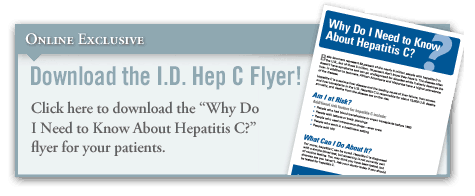Nearly 5 million Americans are infected with hepatitis C, and more than 80% of these individuals are baby boomers. Alarmingly, 75% of people with hepatitis C aren’t aware they are infected.
In August 2012, the CDC issued new guidelines recommending that all baby boomers (those born between 1945 and 1965) have a onetime test for hepatitis C. This could detect another 800,000 of those infected and potentially save 120,000 lives.
Characterizing Hepatitis C
Hepatitis C remains the only viral infection that can be cured, and this move toward broader testing comes at an important time as therapy continues to improve. Cure rates with protease inhibitors recently approved by the FDA range between 68% and 79%. For many patients, these therapies will cut treatment time in half. With more than 50 drugs in development, the cure rate is likely to improve to greater than 90% over the next 5 to 10 years, and therapy will be easier to tolerate and take less time to become effective.
Testing Baby Boomers for Hepatitis C
Testing for hepatitis C has been shown in studies to be cost-effective, especially as the epidemic costs the U.S. an estimated $30 billion per year. That number is projected to rise to $80 billion per year by 2025. Curing the majority of those affected will dramatically reduce those costs.
Physicians should recognize that routine physical exams may not detect hepatitis C. Up to 40% of infected people will have normal liver blood tests, so a specific antibody test must be conducted. In addition to talking to baby boomers about hepatitis C testing, physicians should also discuss testing with those who received blood products prior to 1992, people with a history of intravenous drug use (even once), healthcare workers, sexual partners of those infected, and those with tattoos and body piercings.
The American Gastroenterological Association has also joined the fight against hepatitis C. It recently launched I.D. Hep C, a national campaign to increase awareness about hepatitis C among patients and healthcare professionals and encourage baby boomers to get tested. The campaign website—www.IDHepC.org—provides resources for patients and physicians, including a flyer on testing that can be distributed to patients or made available in waiting rooms.




 JonN
JonN